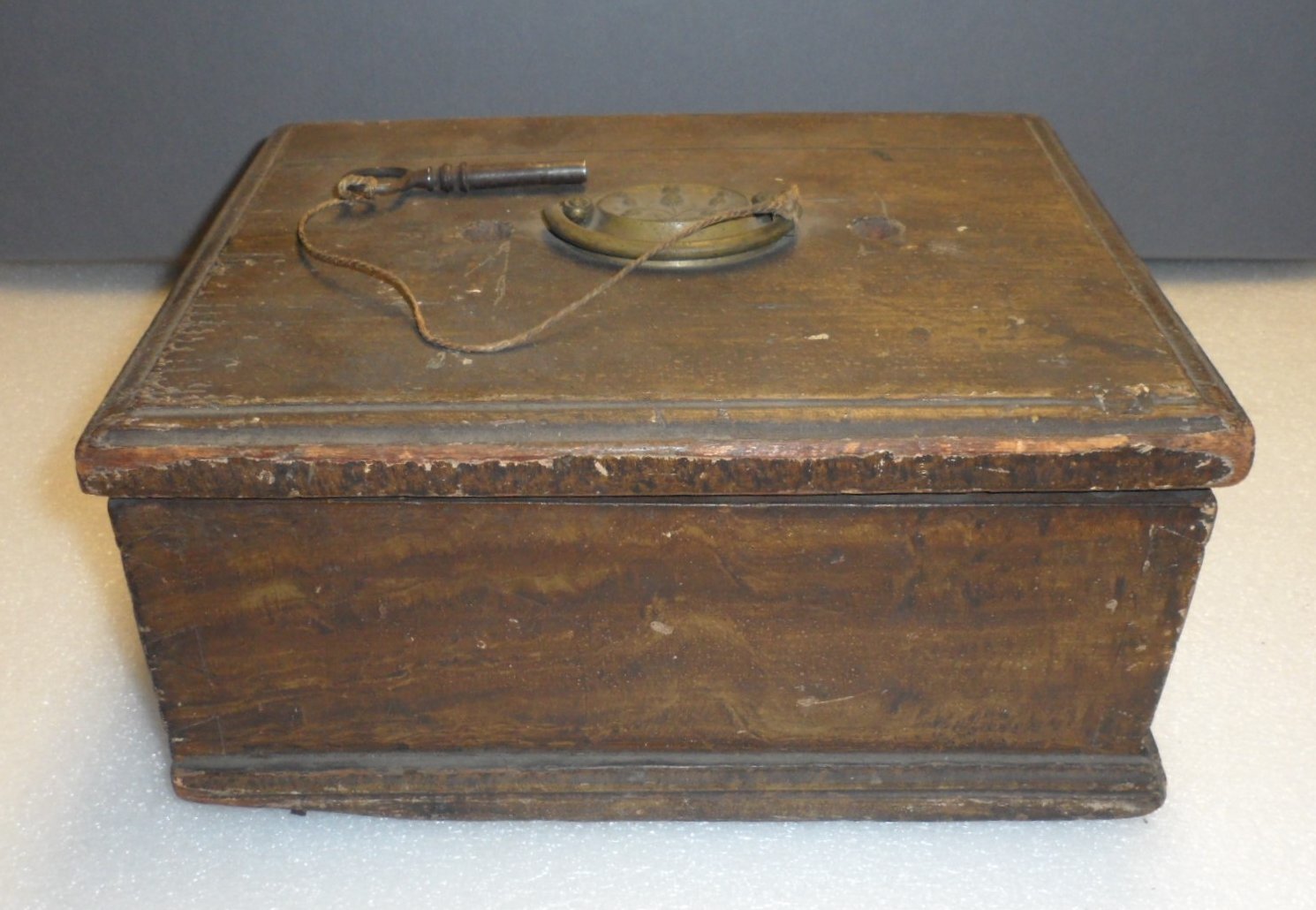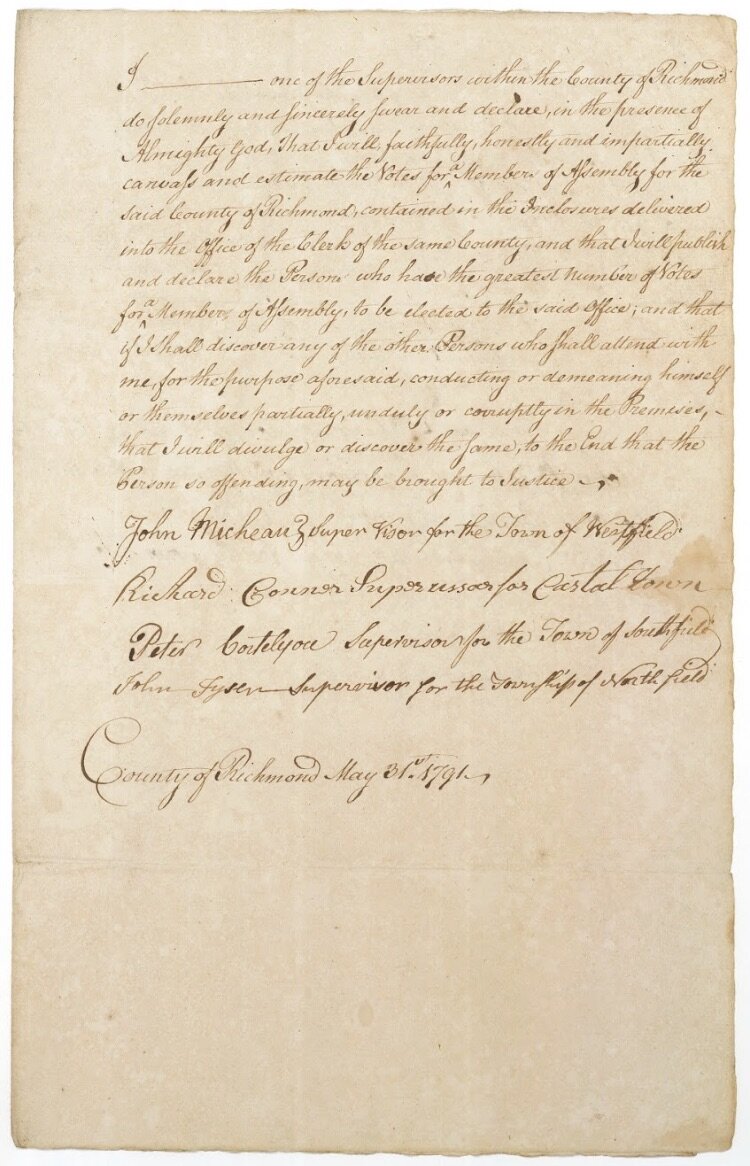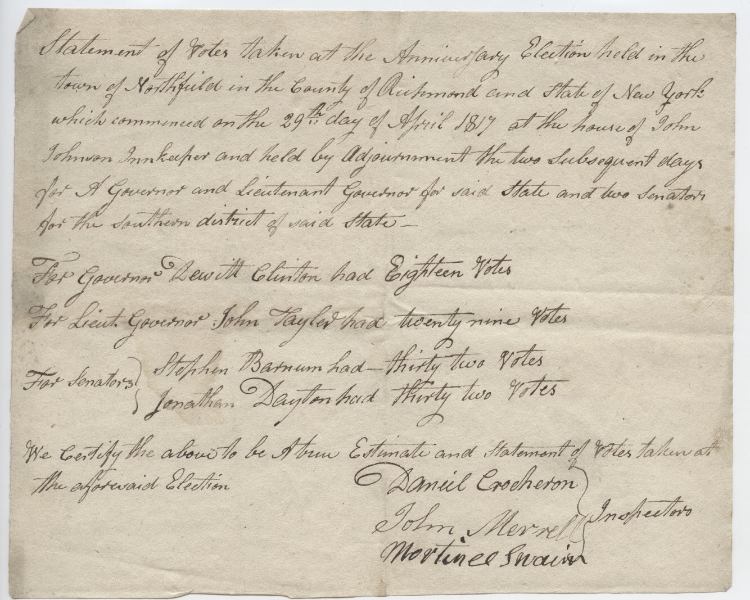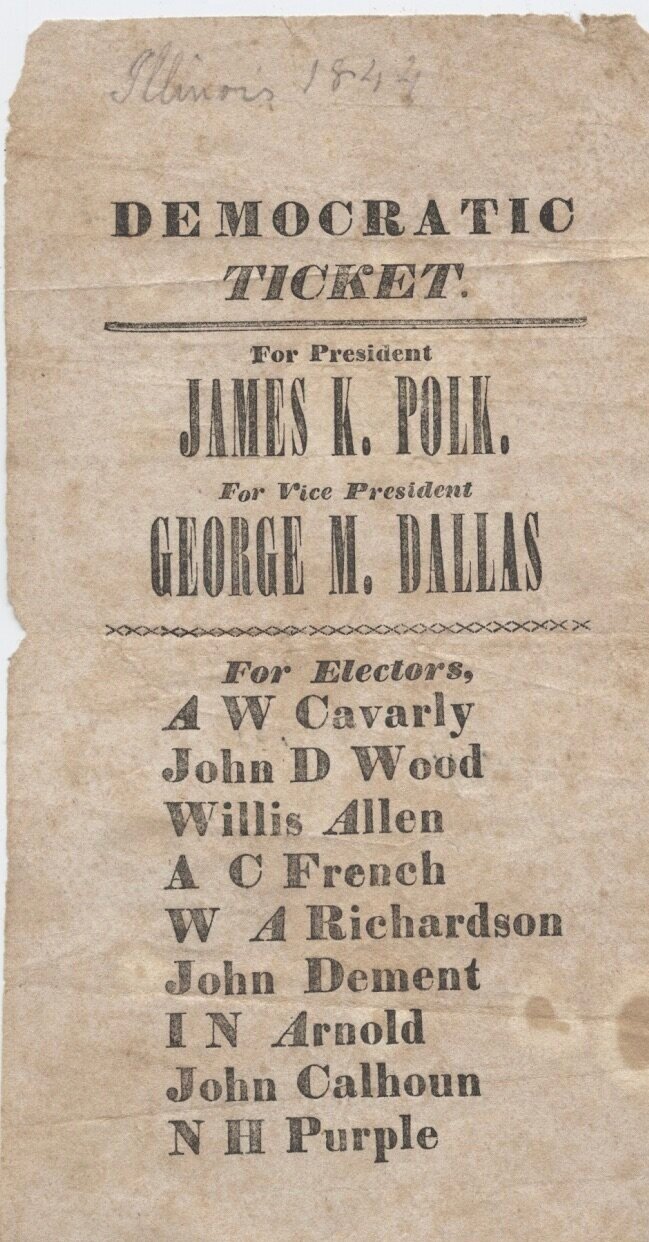The Voting Process
From voice votes to computer-scanned ballots, New York’s voting process has changed along with our culture and technology.
In colonial New York, voters gathered in public places to declare their choice out loud. Election days often became noisy, raucous and exciting. The process was public and transparent, but there was no privacy about a voter’s choices. This made it possible for people with more power to influence elections.
To address this issue, in 1777 New York State’s first Constitution called for “a fair experiment” with paper ballots to replace voice voting. This new process, implemented at the close of the American Revolution, was considered a success, and by 1787 paper ballots were in use for all state-wide elections in New York.
The earliest ballots were handwritten, but political parties soon began providing voters with a pre-printed list of their party’s candidates, known as a “ticket,” hoping that voters would support all of the candidates in that particular political party. Candidates campaigned in person, even at polling places. With few state or national standards for election recordkeeping, election inspectors and clerks kept handwritten lists of voters and tallied the votes by hand.
The New York Ballot Reform Act of 1890 established stricter standards for elections. Notably, the Act required counties to print official ballots and provide private voting booths; banned campaigning in polling places; and introduced standard forms for recording vote totals. Before long, some Staten Island towns began to use newly-invented lever voting machines, which provided voters with a faster way of casting their votes in secret, and also sped the process of determining election results. By 1924, all polling places in New York City were required to be equipped with voting machines.
Over the next decades, advances in technology led to new voting machine designs. Today, several types of electronic voting machines are in use in New York State. These include devices that scan and tally paper ballots, and others that use sound and touch to allow voters with disabilities to vote privately and independently. In the future, remote voting, either digitally or by mail, may become a common practice.
Ballot Box
Used on Staten Island ca. 1780-1810
The two round holes in the lid suggest that this box was designed to receive paper ballots that were rolled into tight scrolls. Each voter was required to roll or fold his ballot to conceal the contents before handing it to an election inspector, who would then put the ballot into the ballot box.
This box was previously owned by Ira K. Morris, who published the two-volume Memorial History of Staten Island in 1898. This may be the early ballot box he describes in his book:
“In the old days, when the voters of ‘Castletown’ took three days to deposit their ballots, the polls were located first at Nautilus Hall, Tompkinsville; then at Macgregor's or the Fountain House, on the North Shore, and finally at Bodine's Tavern, (now the Keene residence), at Castleton Corners. The same ballot-box did service at all three places and the one used from 1782 to 1810, is still preserved."
Ballot Box (lid detail)
Oaths of Election Canvassers
May 31, 1791 and May 29, 1792
This document is signed by the elected supervisors of the four towns that made up Staten Island (Richmond County) at that time. It indicates that they were responsible for conducting the election to select the county’s representatives in the New York State Assembly. Gozen Ryerss won the office in 1791 and 1792.
Ryerss is known to have enslaved people. He freed two men (James and Joseph) in his will of 1802, but the remainder of the enslaved people that were considered part of his estate were to be sold for the financial benefit of his family. Ryerss was also a delegate to the New York State Convention of 1788, which voted to ratify The Constitution of the United States. He became a Richmond County judge in 1783.
Statement of Votes
April 29, 1817 through May 1, 1817
In November 1816, Staten Islander Daniel D. Tompkins, who was then serving as Governor of New York, was elected Vice-President of the United States. In the spring of 1817, an election was held to elect a new governor, lieutenant governor, and state senators. This statement of votes records the results of that election in the town of Northfield, Staten Island, which took place over a three-day period from April 29 through May 1. DeWitt Clinton won the election for governor, and John Tayler, who had served as lieutenant governor under Tompkins, was re-elected to the same office.
In the early 1800s, there were relatively few public buildings in most places, so towns and counties often rented space for polls in private businesses such as hotels, taverns, offices, and even in people’s homes. This statement notes that the election was held at “the house of John Johnson Innkeeper.”
Election Tally Sheet
1836
This document records the votes tallied on Staten Island in the New York State election of 1836. The columns at left list the candidates and the office they were seeking, followed by the number of votes per candidate in each of the four towns that comprised Staten Island at that time (Northfield, Castleton, Southfield, and Westfield) and a vote total. The column at right indicates which candidates received the majority. The two candidates at the top of the list, William L. Marcy and Jesse Buel, ran for Governor of New York State. Buel won on Staten Island by 12 votes, but Marcy won the election statewide.
Democratic Ticket
1844
By the mid-1800s, it was common for political parties to provide voters with pre-printed "tickets" listing their candidates. In the Presidential election of 1844, James K. Polk was at the top of the Democratic ticket. Polk, who campaigned for the annexation of Texas, Oregon, and California, defeated Whig candidate Henry Clay.
Ballot Box (detail of lid)
ca. 1857-1858 (patented by Samuel Jollie in 1858)
Glass ballot boxes were designed in the 1850s as a response to a nationwide political debate over issues such as election fraud, corruption, and voting rights. In 1856, New Yorker Samuel Jollie invented a glass globe ballot box in a cast iron frame, designed so "that the bystanders may see every ballot which is put in, see all the ballots that are in, and see them taken out." The transparent globe was visible from every side, and the iron frame has a lid that can be locked shut, with a small circular opening (seen in this detail photo) for a tightly-rolled ballot to pass through. Jollie reportedly sold 1,200 of his boxes to New York City in time for the 1857 election.
The glass globe ballot box quickly found its way into popular culture, appearing in cartoons and illustrations of voting. It became a symbol of the voting process, both in its ideals and its flaws.
Abolitionist and women’s rights activist Sojourner Truth spoke about the new ballot boxes as she anticipated the day when women would have the right to vote:
“I must sojourn once to the ballot-box before I die. I hear the ballot-box is a beautiful glass globe, so you can see all the votes as they go in. Now, the first time I vote I’ll see if the woman’s vote looks any different from the rest–if it makes any stir or commotion. If it don’t inside, it need not outside.”
Samuel C. Jollie, illustrations from “United States Patent: 21684 – Ballot Box” (October 5, 1858). Courtesy of the United States Patent and Trademark Office.
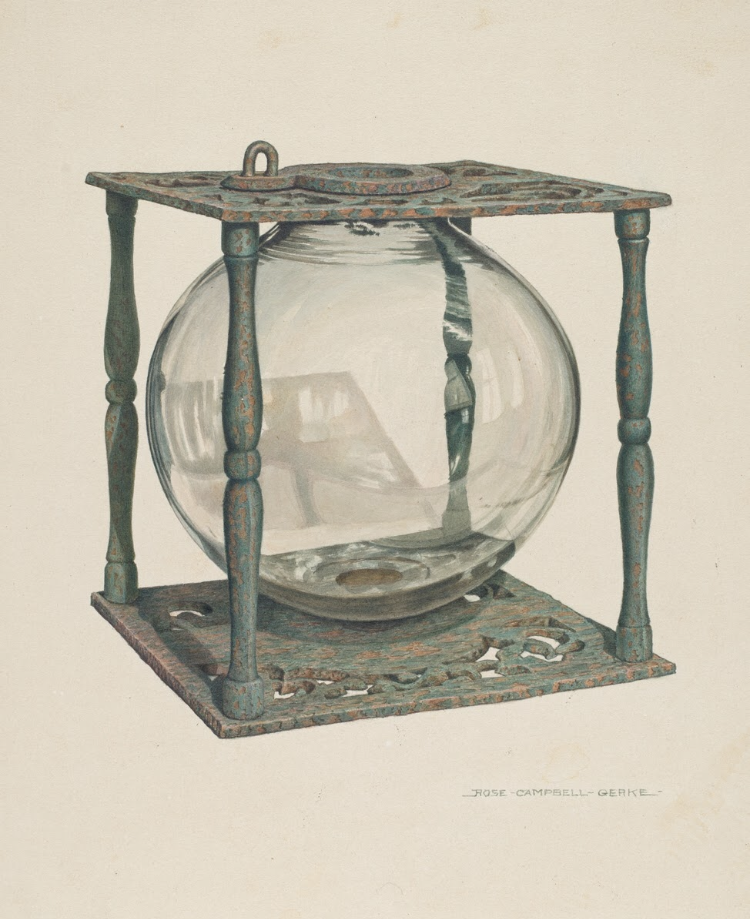
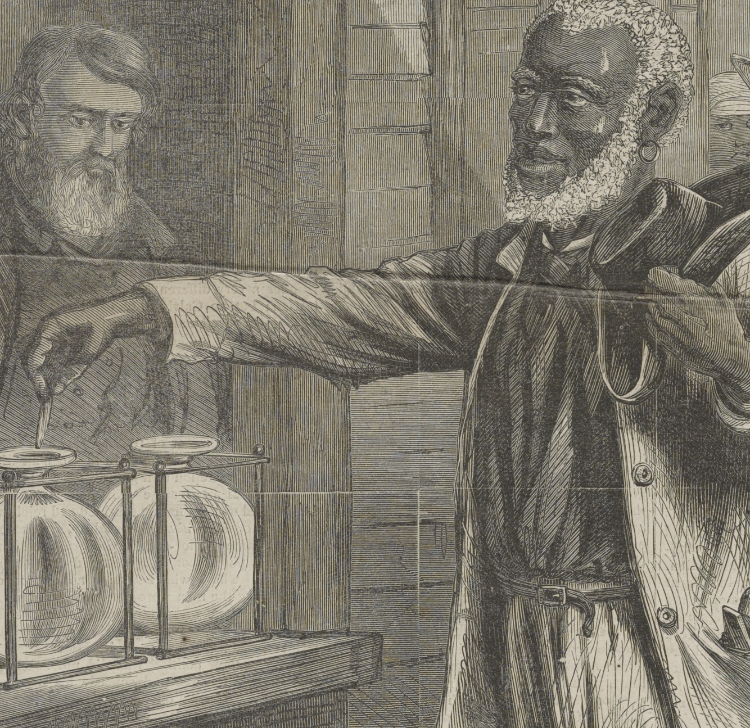
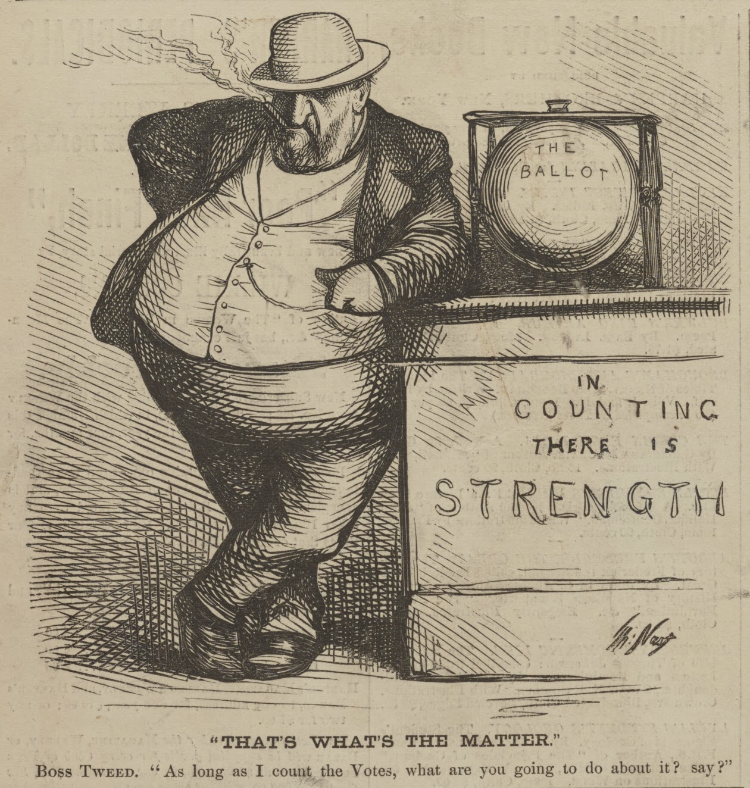
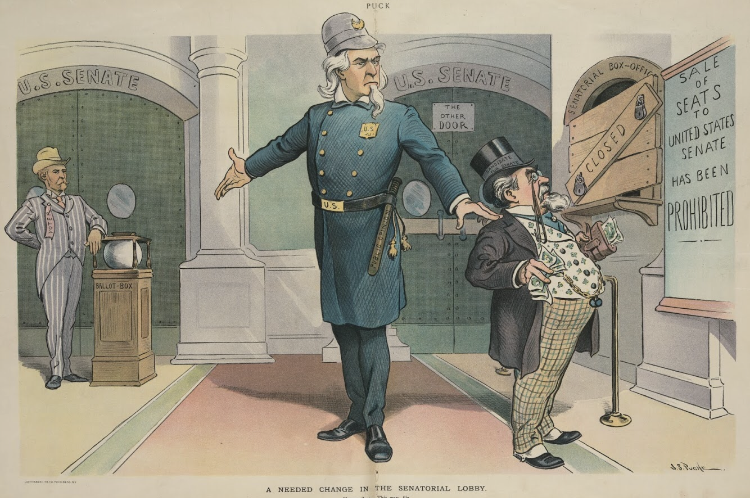
Statement of Election Results
February 11, 1879
This document officially records the result of an election of town officers for Middletown, Staten Island. Each slip of paper attached to the margin represents a ballot or “ticket” that was placed in the ballot box at the election. The various ballots were printed by political parties or other private groups, not by the government, so this was a way of preserving an example of each in the public record.
George Bechtel, owner of the George Bechtel Brewing Company in Stapleton, won the election and became Town Supervisor.
Handbill, “Citizens Arouse!”
November 8, 1888
Articles in the New York Times and other local newspapers in the late 1800s suggest that claims of voter fraud were not uncommon in Staten Island elections. This handbill argues that the results of the 1888 election for Sheriff of Richmond County were tainted by altered ballots, which had improperly led to the election of Michael Cahill over John H. Ellsworth. In the end, Ellsworth won the election and served as Sheriff from 1889 through 1891.
Receipt for Ballots
March 3, 1891
New York’s Ballot Reform Act of 1890 brought some much-needed standards to the state’s voting process. This receipt, from the spring of 1891, records the delivery of the new, officially-printed ballots and voting instructions for a local election held in the Village of Port Richmond. The ballot instructions were printed in both English and German, due to the large population of German immigrants on Staten Island.
Myers American Ballot Machine Co. Advertising
Pamphlet
1895
In the wake of voting scandals involving paper ballots, Jacob H. Myers, an inventor and maker of safes, developed a mechanical-lever voting booth that he claimed would "protect mechanically the voter from rascaldom, and make the process of casting the ballot perfectly plain, simple, and secret."
Several of these machines were used in the town of Northfield, Staten Island, in the 1890s. The Richmond County Advance newspaper reported on the use of the new machines in an article titled "The Myer's Ballot Machine" on November 9, 1895: "The people of Northfield are well satisfied with the results shown by the Ballot Machines. On Tuesday the voting was done without confusion, the citizens being able to record their votes in a very rapid manner. As a safe guard against corrupt practices at elections, the machine is the best thing yet invented..."
Official Ballot for Election District No. 5, Middletown, Staten Island
November 5, 1895
The new “blanket ballot” was introduced to New York State in 1895. For the first time, each voter at a polling place would receive an identical ballot containing the name of every candidate running for office, organized by party. Voters could identify the party of their choice by the name and symbol printed at the top of each column. They could mark the circle at the top to vote for all of a party’s candidates, or make marks beside the names of individual candidates.
